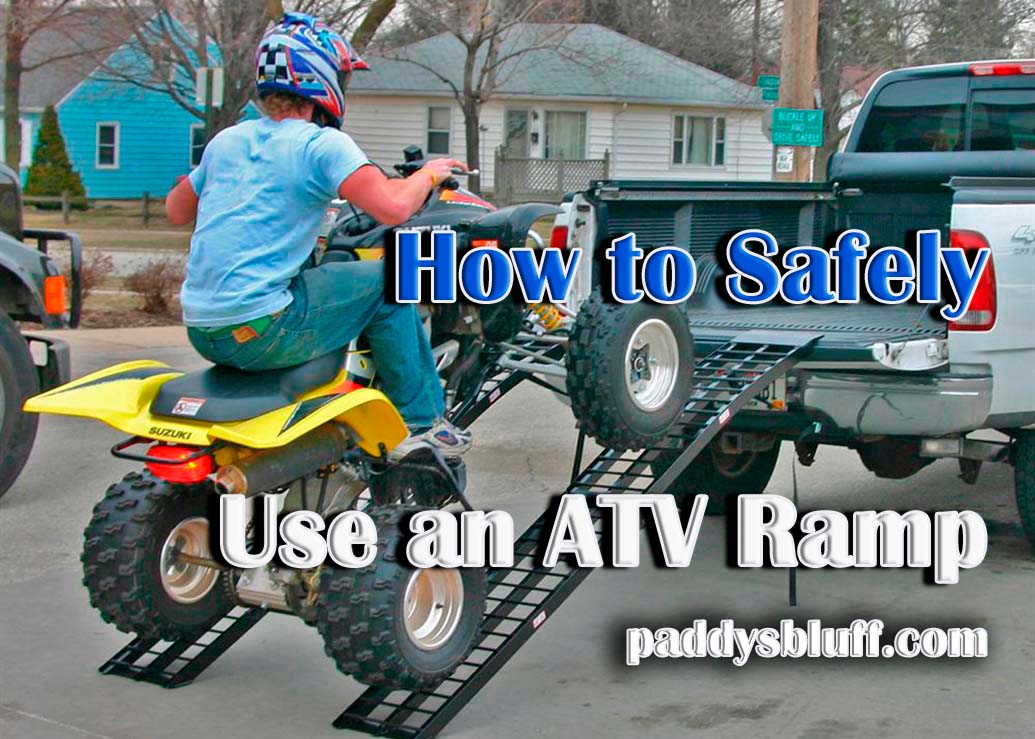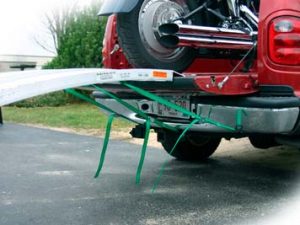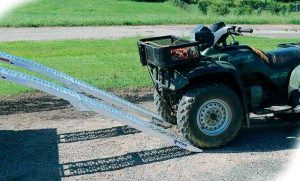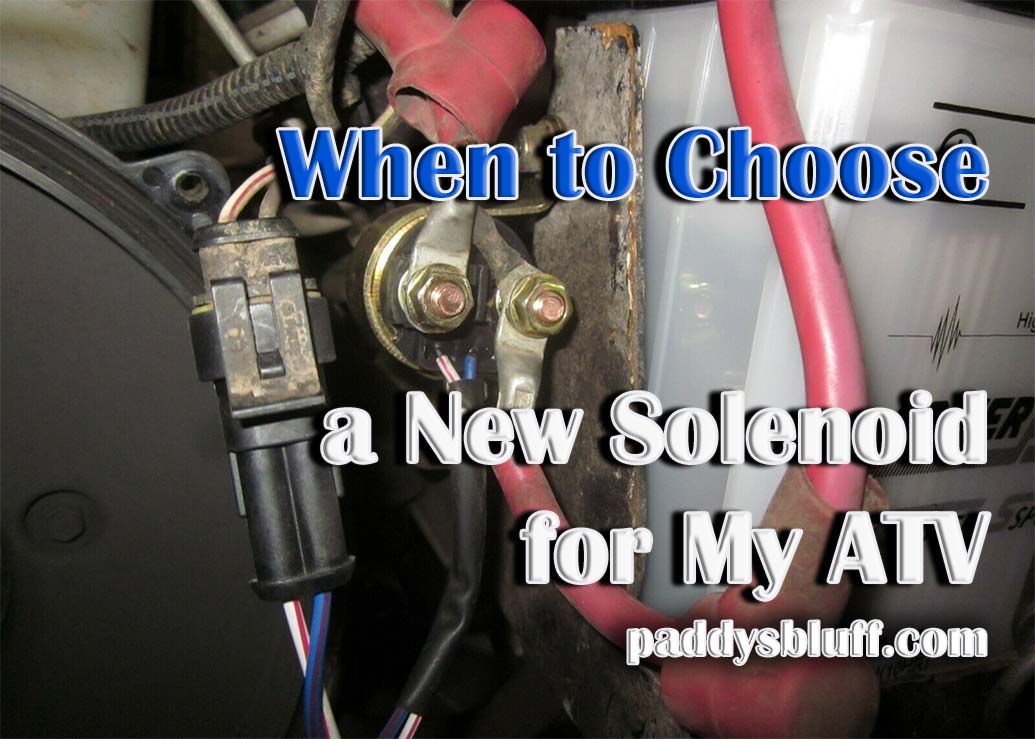
How to Safely Use an ATV Ramp
If you’ve got a reliable truck (mid-size/full-size) and want to use it to transport your ATV to the closest off-roading site, you’ll need a proper set of ramps for loading. Now, some folks that wanna go cheap use dimensional lumber. Others lower the tailgate and “climb” onto it with their ATVs. However, those methods aren’t at all safe and you’ll most likely end up hurting yourself or damaging the truck and the ATV.
The average four-wheeler weighs +/- 500 pounds, and makeshift “ladders” may not be strong enough. That’s why I highly recommend using ramps for this. They won’t cost you a fortune but will, most certainly, make it a lot easier (and safer) to put the all-terrain vehicle into the pickup’s bed. So, join me, and let’s learn how to use ramps properly.
Step #1: Setting Everything Up
It’s always better to plan ahead instead of dealing with emergencies. Don’t worry: preparation won’t take much time. The most important thing here is to park the truck right. It can also be a van or a trailer, of course, but pickup trucks are a lot more popular as transportation vehicles. Make sure it’s an even, smooth surface. The key here is to keep both the truck and the ramps as flat as possible.
Next, park the ATV behind the truck. Don’t forget to leave enough room for the ramps. Why should you do that, exactly? Well, this allows finding the right space between the left and the right ramps. If it’s a regular set of ramps, just lay them out. And if you have folding ramps, unfold them.
Step #2: Getting Right to It
Proper positioning and securing – that’s what you need to ensure to safely use ATV ramps. If the ramps aren’t positioned the right way, they may not be able to support the weight of the four-wheeler. Start by placing them onto the edge of the pickup truck. Can you see the tabs on the far end of the ramps? They’ll make sure the plate top is secure.
If you’re rocking a set of curved ramps, the arch should be “looking” up. And if it’s a pair of straight ramps, the tabs must also be pointing upward. The next part can be a bit tricky. The idea is to place the ramps so that they perfectly match the space between the all-terrain vehicle’s wheels. If you followed my lead earlier and parked the ATV, this part will be easier to complete.
Step #3: Securing the Ramps
 Unless it’s an expensive set of ramps that have anti-slip protection, you’ll need to secure them. Or else, the ramps will slide off in the middle of the action, and you don’t want that, trust me. A safety strap will be perfect for this. I recommend running it through the upper rugs (the ones closer to the truck). That way, the ramps will be more stable and be able to hold more weight.
Unless it’s an expensive set of ramps that have anti-slip protection, you’ll need to secure them. Or else, the ramps will slide off in the middle of the action, and you don’t want that, trust me. A safety strap will be perfect for this. I recommend running it through the upper rugs (the ones closer to the truck). That way, the ramps will be more stable and be able to hold more weight.
If you’re happy with everything, fasten the strap to the truck. The frame or the hook will do. Just make sure you’re securing the strap to something metallic and sturdy. To make this “construction” reliable, increase the tension. Slack is the #1 enemy of any straps, as it defeats the purpose of using them. If the ramps can move (even slightly) to the sides or up and down, that means the straps aren’t tight enough.
Repeat this procedure for both ramps and double-check everything.
Step #4: Loading Up
 Alright, we’ve got the “springboard” ready. All that’s left to do is carefully drive the ATV up the ramps and load it onto the truck. The wheels need to be lined up with the ramps. Otherwise, the ATV will slip or roll over, leaving you with injuries and hefty repair checks. So, don’t rush this: if the ramps aren’t in perfect alignment, repeat step #3. Once you’re happy with the ramps, hit the gas and slowly “climb” up.
Alright, we’ve got the “springboard” ready. All that’s left to do is carefully drive the ATV up the ramps and load it onto the truck. The wheels need to be lined up with the ramps. Otherwise, the ATV will slip or roll over, leaving you with injuries and hefty repair checks. So, don’t rush this: if the ramps aren’t in perfect alignment, repeat step #3. Once you’re happy with the ramps, hit the gas and slowly “climb” up.
Start the four-wheeler on the ground – don’t fire up the engine when you’re already on the ramps. And don’t stop the ATV either. What we’re looking for here is an uninterrupted motion from the ground all the way up into the truck. With the ATV successfully loaded, tie it down. Straps will be the right choice here for most drivers, but I prefer good old (and cheap) cables. It doesn’t matter what you use as long as the ATV is secure.
Step #5: Removing the Ramps
You’re not planning on driving to the closest camping site with the ramps “hanging out” in the back, are you? First, remove the straps. Be gentle with them: some amateurs use scissors for cutting, but they actually cost money, so don’t do that. As for the ramps, the best spot for them is right below the ATV on the truck’s bed.
And one more thing: when you arrive at your destination, fight the urge to just slide out of the truck. Put the ramps back on and drive down that way. It’s not rare for amateurs to damage both their transportation vehicles and ATVs when trying to skip the ramping stage and jump down driving backwards. Be patient and you’ll be rewarded!


